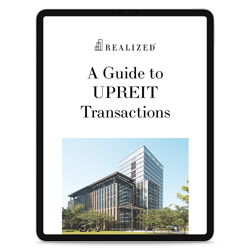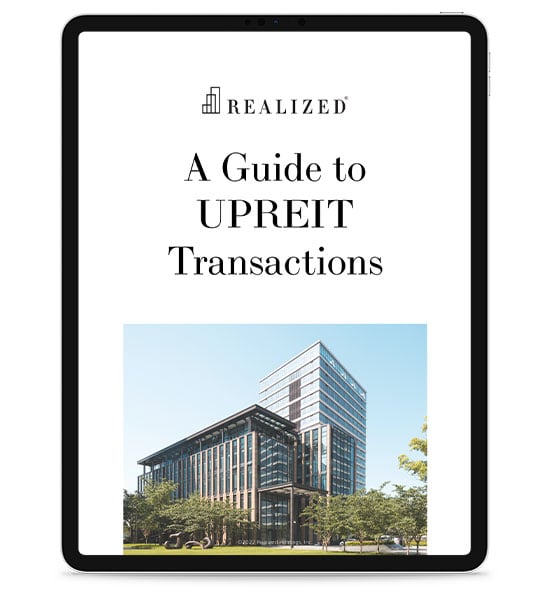
If you’ve been following these blogs for any length of time, you know there are several different ways in which you can invest in real estate. There are direct investments, in which you place your funds directly into a piece of land, second house or industrial warehouse for example.
Then there are the “hands-off” investments, ones in which you leave the property management, upkeep and sale to someone, or something, else. Two common structures for real-property investments are Real Estate Investment Trusts (REITs) and Delaware Statutory Trusts (DSTs). Though DSTs and REITs are focused on real property buy-ins, they are not alike. Understanding their differences is important when it comes to making the right choice for your portfolio.
What They Are
But first, let’s dig a little more deeply into what these investments are. The Delaware Statutory Trust is a legal entity, or trust, created under the Delaware statutory law – hence, the name. When you put money into a DST, you own a pro-rata interest in the trust along with other investors. In plain English, this means that, with your minimum investment, you own a piece of the trust which, in turn, owns the real estate asset. As a partial trust owner, you may receive cash distributions if they are available, either from rental income or the eventual asset sale.
A REIT is an organization with the goal of acquiring, management and selling real estate. There are all kinds of REITs. Some are targeted toward a certain real estate sector, others toward financial products involved in the real estate industry. An investment in a REIT gives you a share of the company that is buying/managing/selling the asset, rather than actual real property ownership.
REITs and DSTs are similar in that they are passive investments. You can put your money into them and reap the rewards without the hands-on hassle inherent with direct real estate ownership. Private REITs and DSTs represent illiquid investments in that your original capital will be tied up for a specific period of time, known as the hold period. When the hold ends, the asset is sold, and you receive your pro rata share of any proceeds that are earned, including any appreciation amount. Remember, however, that the asset being sold has the potential to depreciate in value as well, leaving the possibility of not being able to return to investors the original principal amount invested.
If you are looking to invest in a more liquid asset, however, you could opt to put money into a publicly traded REIT, one trading on one of the stock exchanges. If you invest in this manner, you can sell your REIT shares any time. However, depending on the economy, stock market and other factors, you could end up with less than your original investment. As with any other stock investment, a public REIT invest is subject to fluctuations in the public market, leaving the possibility of volatility in your original principal investment due to factors such as investor appetite, changes in interest rates or even recessionary periods.
One similarity between both Private REITs, Public REITs and DSTs that will always hold true, however, is that projected returns and dividends are based on the performance of the underlying properties. Underperformance could result in decreased returns, and vice versa.
And How They Differ
Aside from their real estate foundations, DSTs and REITs differ in the following ways.
Minimum investment. If you want to invest in a DST, you’ll need to fork over a minimum of $25,000-$50,000. Your REIT minimum investment can be as low as $1,000; typical investments don’t pass $5,000.
Costs and Expenses. It is no surprise that both REIT and DST investments have fees attached. Here are common costs of investing into each:
- Public and Private REITs: For REITs, fees differ whether you are investing in a publicly-traded REIT or private REIT. While publicly-traded REIT shares are purchased through a broker, who will need to be compensated through a brokerage fee, private REITs are typically purchased through a financial advisor or similar investment professional. Different from publicly-traded REITs that is similar to purchasing a stock, private REITs have fees baked into each share purchase that can total 9-10 percent of the total investment.
- DSTs: Similar to an investment in a private REIT, DSTs have up-front fees baked into each offering. These fees include compensation to the trust’s sponsor, selling groups, and broker-dealers (when involved). Refer to our article DST Risks & Fees for further discussion of the costs of investing into a DST.
Investment objectives. REITs are terrific if you are either new to real estate investments, or you want a diversified approach to real property ownership.1 Whereas DSTs either own a single asset or a small portfolio of properties, typically ranging in size from two to twenty-five properties, REITs have been known to hold hundreds of assets at one time. If, on the other hand, your net worth is higher than $1 million and want a potential income-producing property with a long-term hold period, the DST might be for you.
Structure and Tax Deferrals. Though the DST, your investment is a direct interest in real estate, thanks to IRS Revenue Ruling 2004-86. Those DST shares can be eligible for tax deferral through a 1031 or 1033 Exchange once the trust’s hold period comes to an end. Not so with your REIT investment. In such a situation, you own the company that owns the real estate, rather than owning the real estate directly. As such, REIT shares aren’t eligible for 1031 exchange rules or tax-deferral activities, unless you move those shares into an UpREIT, a topic that is more thoroughly discussed in our article You Can 1031 Exchange Into A REIT, Here’s How.
Another key tax feature that differentiates the two is that DSTs are allowed the same tax benefits as investing in direct property. While taxable income derived from a DST investment may be written off through interest and depreciation deductions, dividends distributed by REITs can not since a REIT investment is not considered a direct interest in real estate.
To conclude, while investments might have a real estate foundation, they are not alike. Before putting your money either into a REIT or a DST (or both), it’s important to understand their structural differences, their risks, and how their returns will match your financial objectives.
A DST or REIT investment decision is dependent on many factors, including your investment strategy and goals. Contact Realized 1031 today for more information on wealth-growing strategies through different real estate investment vehicles.
- Diversification does not guarantee returns and does not protect against loss.



